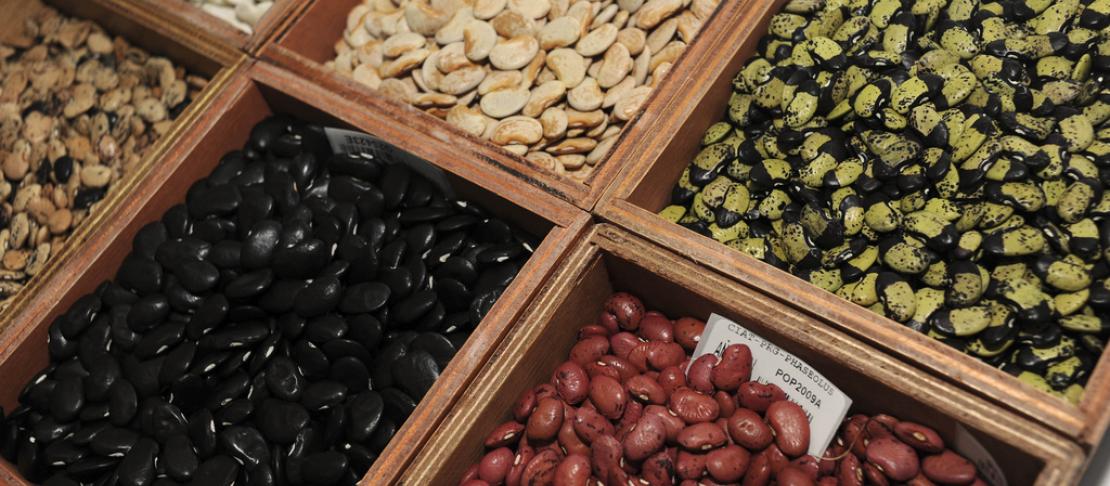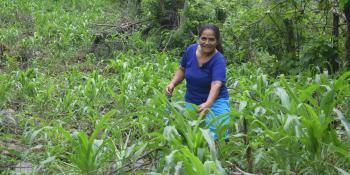Promoting genetic diversity in agriculture through National Adaptation Plans

Experts met in Rome 8-9 April to develop the ‘Guidelines for the Integration of Genetic Diversity into National Climate Change Adaptation Plans’.
One very good way to promote climate-smart agricultural practices is to include them in the National Adaptation Plans (NAPs) that countries are developing under the United National Framework Convention on Climate Change (UNFCCC).
In 2013, the Food and Agriculture Organization of the United Nations (FAO)’s Commission on Genetic Resources for Food and Agriculture adopted a programme to work on climate changes that includes the development of guidelines for the integration of genetic diversity into national climate change adaptation planning, including NAPs.
As part of the process, the Commission Secretariat organized a meeting in Rome, April 8-9, 2014, for experts to contribute to the development of the draft guidelines. The meeting included people working in climate science, the management of crop, farm animal, forest, aquatic genetic diversity and soil biodiversity, environment and agriculture policy and the Secretariats of both the Commission and the UNFCCC.
The CGIAR Research Program on Climate Change Agriculture and Food Security (CCAFS) was invited to provide one of the opening presentations to set the stage for the meeting. CCAFS is working through national and subregional partnerships to investigate the use of genetic diversity to adapt to climate change. CCAFS has also analyzed the extent to which the use of biological diversity for climate change adaptation is being included in NAPAs (National Adaptation Programmes of Action) and NAPs (and funded, follow-up activities), and the influence of other, sector-specific policies on the use of crop diversity in particular. Michael Halewood, Policy Theme Leader at Bioversity International, presented a cross section of CCAFS work, linking it to the development of the guidelines. He highlighted the timeliness of the guidelines, and their high potential for creating a context for government agencies, non-governmental stakeholders and experts to work together to raise the profile of genetic resources for food and agriculture in NAP development.

Linda Collette, Secretary, FAO Commission on Genetic Resources for Food and Agriculture; Sadya Ndoko, Program Officer, UNFCCC Secretariat; Michael Halewood, CCAFS, Bioversity International. Photo: A. Bedmar
Linda Collette, Secretary of the Commission, provided an overview of FAO’s work on climate smart agriculture and the Commission’s program of work on climate change.
Sadya Ndoko, Program Officer, UNFCCC Secretariat, introduced the history of the NAPA and NAP development processes, and technical guidelines for developing NAPs that were developed by the Least Developed Country Expert Group in 2012. She highlighted the ways in which Commission’s genetic resources-specific guidelines complemented, and could be used in, countries’ NAP development processes.
Asked about his opinion of the workshop and the draft guidelines, Zachary Muthamia, Head of the Kenya national crop genebank said:
It is great to have two different intergovernmental bodies working on complementary tools for countries to work with. It is a reflection of the maturation of international processes under the United Nations, and it will ultimately make our jobs easier.”

Zachary Muthamia, Head of the Kenya national crop genebank
Source: www.iisd.ca
CCAFS will continue to contribute to the development of the draft guidelines, and offered to work with national partners to identify opportunities to test them out in their penultimate stages of development. Linda Collette underscored her appreciation of CCAFS’ contributions and the importance of still closer cooperation in the future.
The next revised version of the draft guidelines will be considered by the Commission’s Intergovernmental Technical Working Groups on plant, animal and forest genetic resources. The draft guidelines will be discussed by the Commission during its 15th Regular Session in January 2015.
Read more:
National Adaptation Plans in agriculture: a work in progress
New toolkit on climate-smart agriculture can help policymakers make better decisions
The serious business of NAP-ing
Michael Halewood is a Senior Scientist and Policy Theme Leader at Bioversity International. Ana Bedmar is a Research Fellow at Bioversity International.


